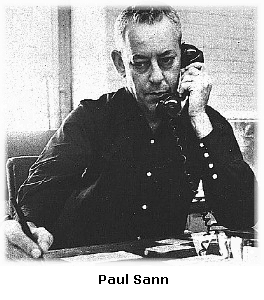|
This is an informal historical excursion back into the Nineteen Twenties.
This is one of the reasons--only one--why we call it the Lawless Decade. The law that had the greatest impact on the wide and wonderful land evoked the least obedience from the people. Liquor--good, bad, indifferent or deadly--flowed like a giant waterfall all during the thirteen wobbly years of the thing Herbert Hoover called "an experiment .. noble in purpose." But the bootlegger was not alone; he dealt only in the happy juice. His errands made Prohibition a sopping-wet farce but there were many other laws ground into the dust during the vibrant and tumultuous years from the Armistice to Repeal. Criminal laws, moral laws, civil laws, social laws, political laws, religious laws--name them.
The convulsive shocks of The Twenties left very little unturned as the once-sacred barriers of tradition and custom were broken down. For better or worse, the populace would never again be inhibited by its own past. All the old playing rules went out of the book.
When we speak here of the Lawless Decade we don't mean lawless in the Wild West sense. America didn't go back to the untamed ways of the frontier; it went forward. It threw off the shackles. Prohibition invaded the American's right to pamper--or ruin--his own insides, so he flouted it.
If the semi-Victorian morals of the horse-and-buggy days intruded upon his right to enjoy a long night out after all the sacrifices involved in making the world safe for democracy, then the old codes had to be discarded. Grandpa's penny-a-day ideas about thrift, tipped with gold dust at the compound interest window, went out the window too; the road to sudden riches ran through the beckoning Florida sands to the pavements of Wall Street.
It was a time to plunge, on all levels; that was the new American way. It was a time for superlatives--for the Million Dollar Gate and the Million Dollar Body (all aquiver on the silent screen). It was a time for deeds of derring-do--Lucky Lindy astride in the Atlantic in "The Spirit of St. Louis" and Trudy Ederle conquering the English Channel with her own strong arms and legs. It was a time, then as now, for preserving American institutions from foreign invaders--thus the Red Raids and the tragedy of Sacco and Vanzetti. It was a time for sex spectaculars in the courts--Hall-Mills and Snyder-Gray and don't spare the details. It was a time for innovations--radio, Mah-Jongg and Freud and, oh yes, skirts above the knee. It was a time to ask questions in public--Darrow and the monkey versus Bryan and the Book at Dayton.
The best way to tell it seemed to us to lie in the stories of the people who made the time or were made by it. Thus our emphasis is on the human record. There's something to learn from the many who made one kind of mark or another in that frenzied moment in our history.
Here, then, is the Lawless Decade, and any resemblance to persons living or dead is the clear intention of the author.
Paul Sann
Greenwich Village 
|

 We call it the Lawless Decade, but it has been known by many names. F. Scott Fitzgerald, using bathtub gin for the ceremonies, christened it the Jazz Age. Westbrook Pegler called it the Era of Wonderful Nonsense. Frederick Lewis Allen, the period's most able observer, talked of the New Era and the New Freedom. Some put it down as the Roaring Twenties, others as the Get-Rich-Quick Era. To the sports journalists it was the Golden Age. And to the bluenoses, may they rest in peace, it was the Dry Decade--a name born of 100-proof fancy. There was nothing dry about the Twenties.
We call it the Lawless Decade, but it has been known by many names. F. Scott Fitzgerald, using bathtub gin for the ceremonies, christened it the Jazz Age. Westbrook Pegler called it the Era of Wonderful Nonsense. Frederick Lewis Allen, the period's most able observer, talked of the New Era and the New Freedom. Some put it down as the Roaring Twenties, others as the Get-Rich-Quick Era. To the sports journalists it was the Golden Age. And to the bluenoses, may they rest in peace, it was the Dry Decade--a name born of 100-proof fancy. There was nothing dry about the Twenties.